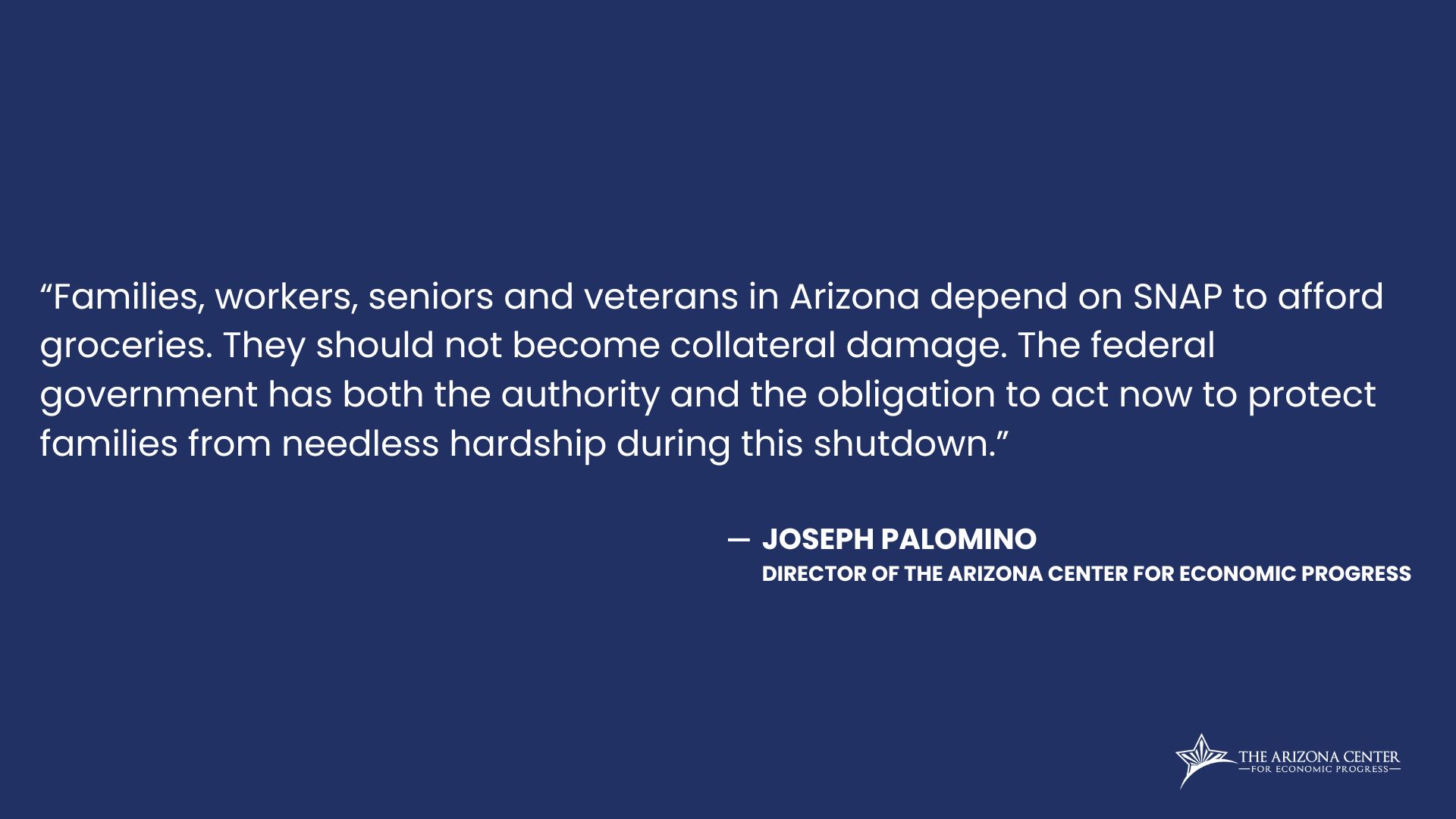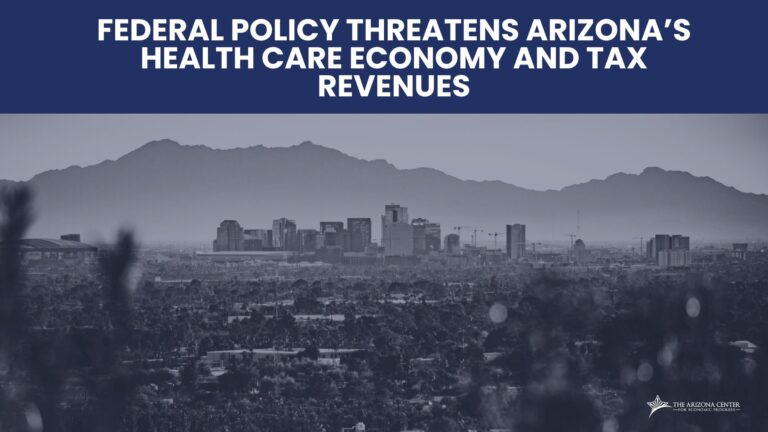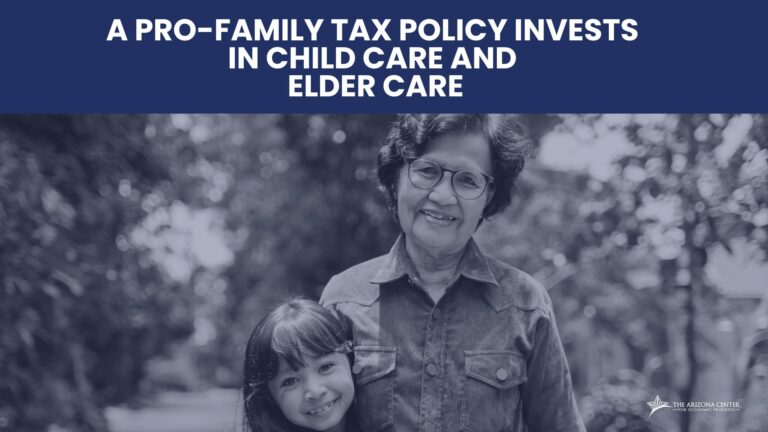
Director Statement: SNAP Benefits Must Continue Amid Federal Shutdown
Below is a statement from Joseph Palomino, Director of the Arizona Center for Economic Progress, regarding the federal government’s responsibility to continue SNAP benefits during the ongoing shutdown.
"The claim that the Trump Administration cannot deliver November SNAP benefits during the federal government shutdown is simply not true. Federal law allows the use of contingency reserves — funds Congress set aside precisely for situations like this — to ensure families continue receiving the food assistance they rely on, and prior administrations have deployed reserve funds during lapses in appropriations. These resources remain available during a shutdown and should be used immediately to protect millions of Americans from going hungry.
"The Administration has acknowledged these federal contingency funds exist, yet it has failed to act. This isn’t a question of capacity — it’s a question of will. Federal officials also could use their authority to transfer funds, as they have for other programs, to fully fund SNAP benefits and prevent needless harm.
"Here in Arizona, 855,273 residents received federal SNAP benefits last month. And in September, the state issued $155 million in SNAP benefits. Families, workers, seniors and veterans in Arizona depend on SNAP to afford groceries. They should not become collateral damage. The federal government has both the authority and the obligation to act now to protect families from needless hardship during this shutdown.
"It would be unconscionable to let politics stand in the way of feeding children, seniors, workers and people with disabilities who rely on this essential program."
This statement draws on analysis from the Center on Budget and Policy Priorities (CBPP).
FAQ
How many Arizonans could be impacted if DES does not issue SNAP benefits for November?
According to the Statistical Bulletin for DES for September 2025, 877,253 Arizonans, including 347,139 children, received SNAP benefits. The average household received $359.02 in SNAP benefits.
How will SNAP benefits impact Arizona’s economy?
According to the Economic Research Service at the United States Department of Agriculture, $1 of SNAP benefits can generate $1.54 in economic activity. The report specifically found that an additional $1 billion in SNAP benefits would generate $1.54 billion in economic activity and support 13,000 jobs.
Therefore, $155 million in total monthly SNAP benefits may generate over $238 million in economic activity in the state.
Can Arizona families afford a month without SNAP benefits?
Arizonans are facing high prices for food and housing and cannot afford a month without SNAP benefits.
Food prices
Between August 2024 and August 2025, the price of all items and the price of food at home in the Phoenix Metropolitan Statistical Area increased by 1.4 percent and 1.5 percent, respectively. Several factors are likely to result in food prices continuing to increase for the remainder of the year, though the government shutdown has impacted the publication of data on food inflation.
Housing costs
Research by the Joint Center on Housing Studies at Harvard University found that 65.4 percent of renter households in Arizona struggled to meet their basic needs in 2023.
According to the American Community Survey 1-year estimates for 2024, 52.4 percent of renter households were housing cost burden, spending more than 30 percent of their income on housing in 2024.
Household debt in Arizona
According to the Federal Reserve Bank of New York’s Quarterly Report on Household Debt and Credit, 2.77 percent of total Arizona debt was 90+ days delinquent in Quarter 2 of 2025, up from 1.9 percent in Quarter 2 of 2024. Additionally, in Quarter 2 of 2025, 5.73 percent of debt transitioned into being delinquent for 30+ days.
How could SNAP impact Arizona’s state and local tax revenues?
The impact of SNAP benefits on state and local revenues can be broken down into two separate indirect effects: (i) increasing purchases of taxable goods and services by SNAP households, and (ii) additional income and sales tax revenue generated from SNAP benefits circulating in the local economy.
Increasing purchases of taxable goods and services by SNAP household
Economic research has shown that while SNAP benefits are largely used to purchase food at home, SNAP benefits result in a substitution effect as well; income previously allocated to food is redirected to other household expenses.
Example: If $1 in SNAP benefits allows a household to spend 10 cents more on goods and services subject to sales tax, then $155 million in total SNAP benefits will likely generate nearly $1 million in state sales tax revenue.
Additional tax revenue from the circulation of SNAP benefits in the economy, separate from SNAP household spending on taxable goods and services
According to the National Grocers Association, Arizona’s annual SNAP benefits generate $211.2 million in state taxes. Conducting a back-of-the-envelope analysis of National Grocers Association’s numbers, every $1 in economic activity from SNAP generates about 7 cents in tax revenue. Therefore, the fiscal impact of the loss of $238 million in economic activity from SNAP could reduce state and local tax revenues by $16.5 million.
Therefore, it can be reasonably anticipated that a single month of foregone SNAP spending will likely reduce state and local tax revenues by somewhere between $1 to $16.5 million.
How could a month without SNAP benefits impact Arizona children?
The loss of SNAP benefits will most likely have an immediate negative impact on the educational outcomes of children who live in households that receive SNAP benefits. Additionally, the long-term effects of loss of SNAP could include poorer health and developmental issues associated with hunger. As we enter Arizona’s flu season, increased hunger could result in a child taking longer to recover from an illness and being sick more often.
Does the Trump Administration/USDA have the ability to continue to fund SNAP benefits?
Yes, there is a general legal consensus that the USDA agency has the authority to use its contingency fund to support the furnishment of SNAP benefits in November. Earlier directives from the Office and Management and Budget have indicated that USDA has such authority and that funds are available to provide at least a partial payment of benefits in November. Newer guidance from OMB and USDA has taken the position that use of contingency funds is limited to emergencies such as natural disasters. Other organizations, such as Center on Budget and Policy Priorities and Center for American Progress, have taken the position that the USDA is legally obligated to tap contingency funds. The language of the law for the use of contingency funds states, “use only such amounts and at such times as necessary to carry out program actions.” Nothing within the statute itself limits the use of the contingency fund to emergencies such as natural disasters.
Why is the government shut down?
Despite a pending December 31, 2025, deadline, Congress consistently failed to act to extend enhanced premium tax credits (ePTCs) to keep health care affordable for 24 million Americans. Many Arizonans, especially the self-employed and small business owners, will see health care costs skyrocket if ePTCs are not extended. The Commonwealth Fund has estimated that failure to extend ePTCs could result in 141,000 Arizonans losing health insurance and $43 million in lost state and local tax revenue associated with foregone healthcare spending.
Additionally, this past summer, Congress passed a tax and spending bill through Budget Reconciliation that the Congressional Budget Office predicted will reduce the incomes of the lowest 20 percent households due to cuts to Medicaid and SNAP. The bill was largely unpopular with the public, and its passing contributed to the US debt being downgraded by Moody’s.
Is anything else going on with SNAP that could impact Arizona families?
Yes, Public Law 119-21 (One Big Beautiful Bill) made a series of changes to SNAP that included stricter work requirements, loss of benefits for immigrants with protected status, as well as burdensome cost shifts to states.
Under the changes, adults ages 18-64 without children under the age of 14 and with no qualifying disability will only be able to receive SNAP benefits for three months in a three-year period unless they meet certain work requirements.
Additionally, under changes in PL 119-21, veterans, those experiencing homelessness, and individuals under the age of 24 who aged out of foster care are no longer exempt from work requirements, despite a previous law that exempted such individuals from work requirements until 2033.
Furthermore, it will be harder for states to obtain area-level waivers from SNAP work requirements. Previously, a state could show that an area either had an unemployment rate of over 10 percent or that the area had insufficient jobs requiring work requirements for SNAP participants.
All waivers will be terminated November 2, 2025, and any new waiver will need to meet the 10 percent unemployment rate requirement. Currently, only Yuma County meets such requirements (if applied at the county level), despite growing signs in Arizona and across the United States that unemployed individuals are staying unemployed for longer, and that even currently unemployed people are seeing work hours reduced. Given that roughly 1 in 8 SNAP participants experienced a loss or delay in SNAP benefits due to failure to recertify eligibility on time under old work requirements, new work requirements could unnecessarily kick people off of SNAP.
CBPP has previously estimated that 147,000 Arizonans, or roughly 17 percent of current SNAP recipients in the state, could lose SNAP benefits from stricter work requirements.
What could the loss of SNAP benefits in November mean for the US economy?
The current fragilities in the US economy will be worsened by the failure to provide full or partial SNAP benefits to households in November.
In recent months, the US economy has shown signs of deep cracks, especially in subprime debt markets, such as those that provide used car loans to individuals with bad or missing credit histories. The percentage of subprime auto loans that are 60-plus days delinquent has risen to 6.5 percent, and two subprime lenders have collapsed in the past few months.
Crushing tariffs, immigration policy, and cuts to healthcare (Medicaid cuts failure to extend enhanced premium tax credits) could cause serious debt defaults that would further constrain liquidity for small businesses and households.
Additionally, the economy is currently K-shaped, in which consumer spending is largely driven by those in the top 20 percent, while the bottom 80 percent of households have seen spending not increase at all after considering inflation.
Growing inequality can cause dangers, such as those we are seeing in the subprime debt market, where many households are spending more than they are making and have tapped into savings.



